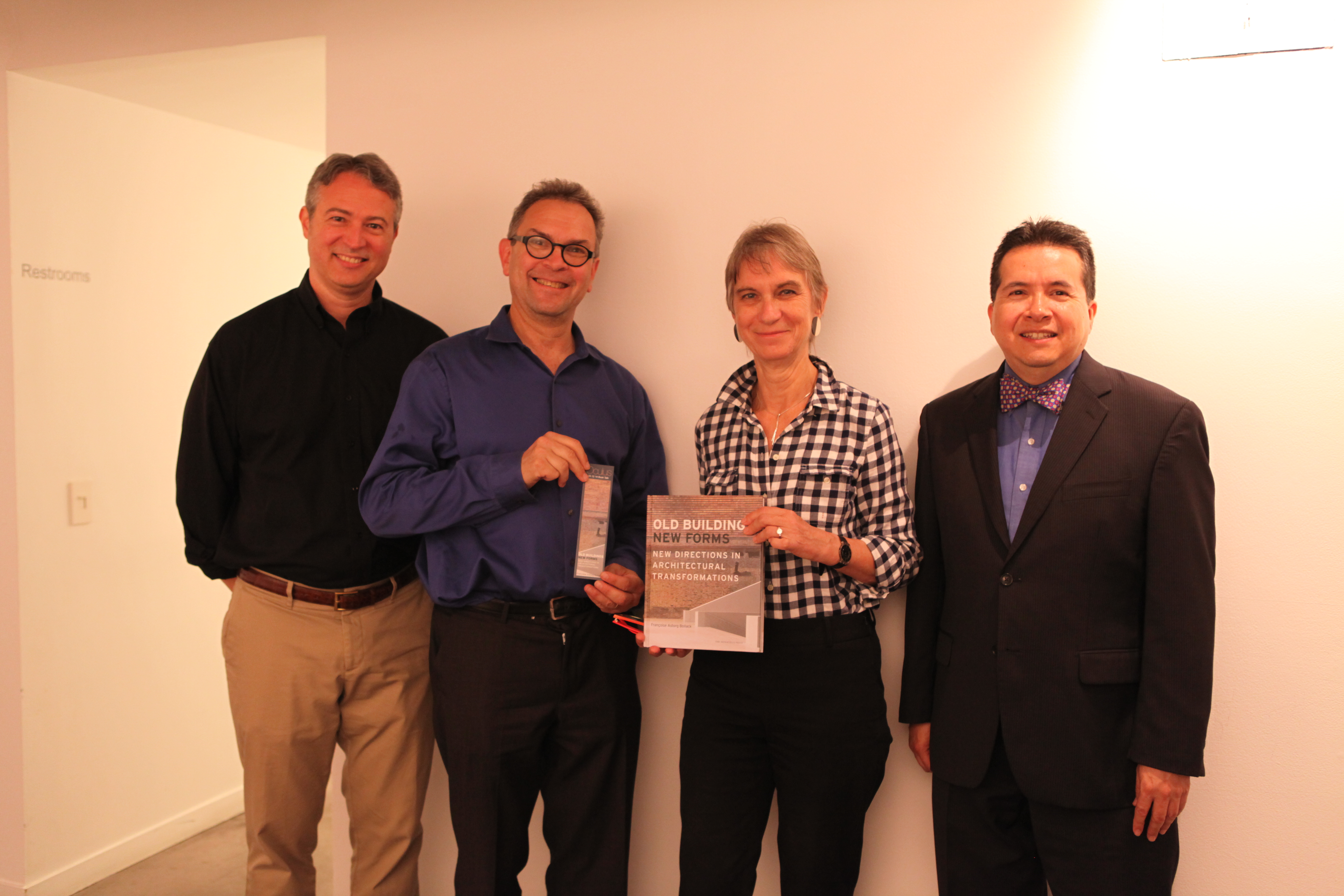by: ac
AIANY Executive Director Rick Bell, FAIA, introduced Françoise Astorg Bollack, AIA’s 05.12.14 Oculus Book Talk at the Center of Architecture by proclaiming that her book “makes sense” and “is essential.” This is very true. Bollack’s Old Buildings New Forms: New Directions in Architectural Transformations is a rare artifact that will be an important tool for the design classroom as well as for designers of and participants in the urban fabric. With this book you are in the hands of a skilled scholar as well as designer. Bollack establishes a framework of basic formal diagrams to structure her argument, and lays an elegant foundation in her introduction by looking at the avant-garde art scene in New York in the 1960s and 70s.
Bollack describes how the then-new postmodern dance movement – the work of Simone Forti and Trisha Brown’s Roof Piece – established a particular sensibility in the art world that forced tradition and progressive practice into a new form. The ad hoc quality of these works, along with the works of Eva Hesse, Gordon Matta-Clarke, and many others, generated a world of ideas that eventually made its way into built space.
The book’s major premise is that pairing historic or just old structures with a new insertion or force creates a new form. The result of this pairing is always the product of invention because the architect is forced to respond to the existing conditions and, therefore, must manipulate ideas rather than form and composition to make a built condition. The buildings that Bollack presents are all very competent and well-crafted examples of a more reactive methodology: at one point during her talk she relayed an architect’s explanation of finding new ways to even draw these new building forms in a more performative manner.
Bollack’s taxonomy of weavings, insertions, wraps, juxtapositions, and parasites are familiar to design academics, and are clearly explained for non-designers. Her introductions and small, insightful illustrations that point to the diagram are elegant and spot-on. Her deft use of case studies in every chapter is delightful; as she said in her talk – yes, we do need to be reminded that Palladio, as a young architect, was radical and invented new strategies when working through “wrapping” the existing medieval structure of Palazzo Della Ragione.
Categorizing buildings into formal diagrams makes sense and exposes the reader to many powerful projects. But I think that Frank Gehry’s Temporary Contemproary could have been used more as a hinge-pin, as Bollack illustrated in her talk, for the genesis of the Old Building New Form movement. The structure of the book diminishes her very powerful argument of this ad hoc movement starting in the 1970s and working its way through the public psyche via Gehry’s work, and finally into the amazing examples of the work of Steven Holl Architects and Wilkinson Eyre. This movement turned American architecture in particular away from precious historicism to the confident manner with which Europe treats its historic structures. It makes me proud to see the American and European work side by side in this text.
One of the best projects, in my opinion, is Bollack’s own Chesterwood Gallery and Visitors Center. She seemed to channel the artist’s inclinations by randomly tacking on a structure to a ramble of other structures, thus acknowledging the DNA of a New England farm construct. I find this so appealing because it delves into how the original structure is built; the thinking or design, if you will, behind vernacular structures is applied to a new condition.
At first I was looking for Bollack’s stance on capital “H” history, but what I found through many of her examples was a new idea of future history. The Santa Catrina Market’s seven-year building process unearthed 14th-century, Gothic, and Roman ruins, and the
S(ch)austall/S(H)owroom, a ruin-as-folly scheme, anticipates that the host ruin would at some point erode to reveal the next ruin, FNP Architeckten’s plywood box. This acceptance that new, contemporary thought is derived from crafting work in historical conditions is exciting and, as Bollack mentioned in her talk, it manifests a new way of working that is hard to draw, hard to predict, and hard to codify. It is a way of making buildings that requires human intensity and participation to execute in the same vein – as Bollack said: “It’s good to be reminded of Palladio.”
Event: Oculus Book Talk: Françoise Astorg Bollack, AIA, DESA, Old Buildings New Forms: New Directions in Architectural Transformations
Location: Center for Architecture, 05.12.14
Speakers: Rick Bell, FAIA, Executive Director, AIANY; and Françoise Bollack, AIA, DESA, Author, Old Buildings New Forms: New Directions in Architectural Transformations
Organizers: AIANY Oculus Committee









